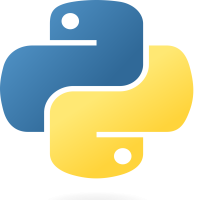
Python - Data Types
11-Jan-2024Python's data types—numbers, strings, lists, tuples, sets, and dictionaries—enable versatile handling of diverse information.
Built-in Data Types in Python
Programming requires an understanding of data types since variables can hold various kinds of data, each of which has a specific function. The following built-in data types are available in different categories in Python:
| Data Type | Description |
|---|---|
| str | Text Type |
| int, float, complex | Numeric Types |
| list, tuple |
Sequence Types |
| dict | Mapping Type |
| set |
Set Types |
| bool | Boolean Type |
| NoneType | None Type |
You can determine the data type of an object using the type() function.
For Example :
name = "micro" print(type(name))
Output :
<class 'str'>
Setting the Data Type :
In Python, the data type is automatically set when a value is assigned to a variable. If you want to specify the data type, you can use constructor functions.
| Example | Data Type | Manually Set Data Type |
|---|---|---|
| x = "Micro Tutorial" | str | x = str("Micro Tutorial") |
| x = 15 |
int | x = int(15) |
| x = 10.5 | float | x = float(10.5) |
| x = 7j | complex | x = complex(7j) |
| x = ["ant", "bear", "cat"] | list | x = list(("ant", "bear", "cat")) |
| x = ("red", "blue", "green") | tuple | x = tuple(("red", "blue", "green")) |
| x = {"name" : "Tom", "age" : 30} | dict | x = dict(name="Tom", age=30) |
| x = {"east", "west", "south"} | set | x = set(("east", "west", "south")) |
| x = True | bool | x = bool(7) |
| x = None | NoneType | x = None |
Understanding and leveraging these data types is fundamental for effective Python programming.


